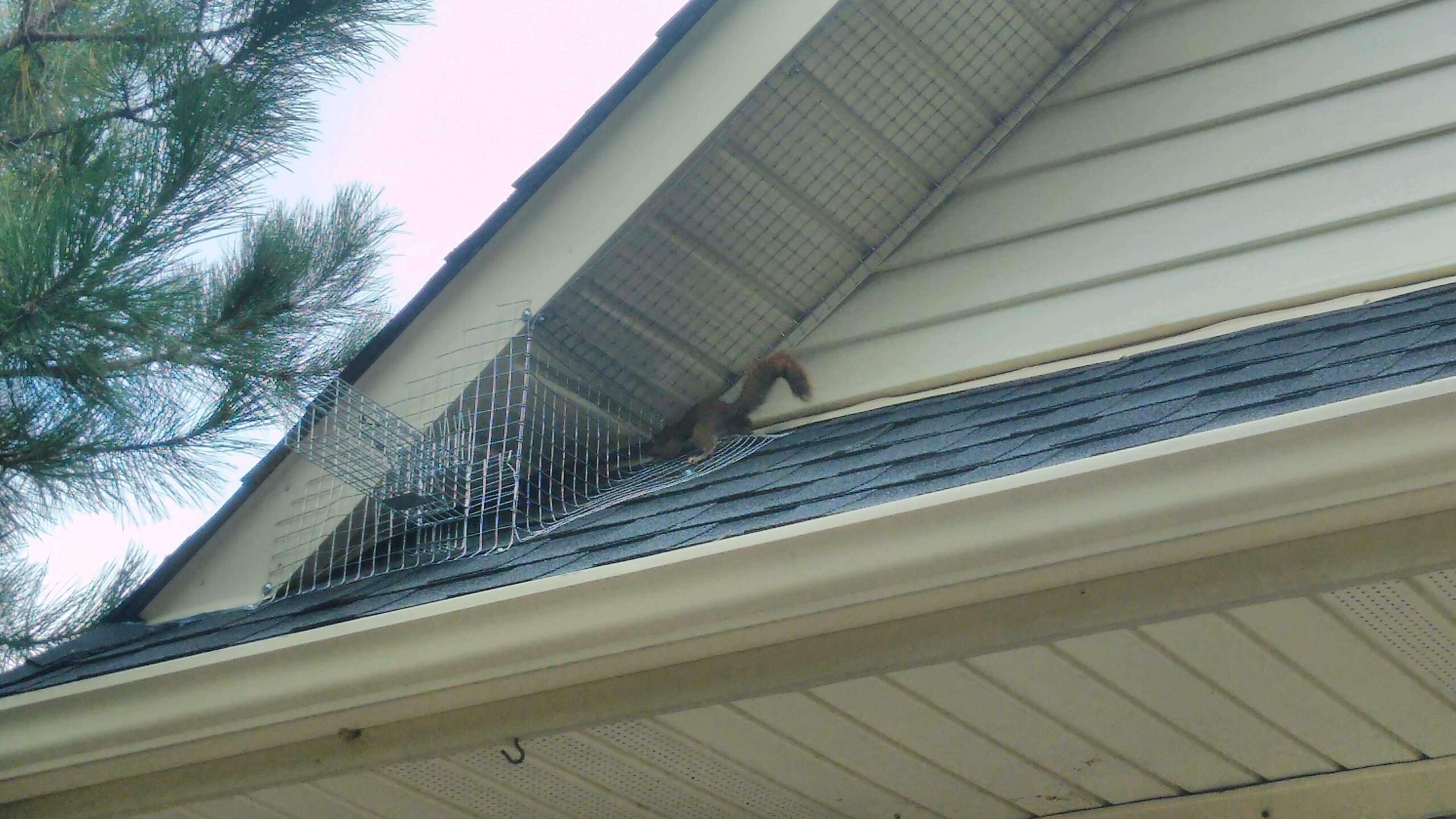SQUIRREL REMOVAL PROCESS
Assess and Remove
Our comprehensive 50 point home inspection is designed to determine squirrel entry points and home damage. The attic is a common den site for squirrels where they gain accessing by chewing holes or slipping in between building materials. We then use hands-on removal techniques to humanely evict the squirrels.
Clear and Clean
Squirrels are notorious for creating large, messy nests within their den site and causing damage through chewing. Skedaddle will thoroughly clear away any nesting material and debris from the den and clean up the mess left behind. We can also replace soiled insulation and damaged ductwork if required.
Prevent and Protect
Our final step is making sure your home is protected, not only against the current intruders, but all the other squirrels in your neighbourhood. To keep them out we will secure the entry points we identified, as well any other potential vulnerabilities.
Squirrels in Montreal
Squirrels are industrious rodents that keep busy searching for food. Their double-jointed hind legs allow flexibility to reach out and grab branches and to climb easily. This is why squirrels scamper up and down trees so quickly. When they discover a desirable entry point on rooftops, soffits or fascia boards, they use their agile movements and cleverness to chew their way into your home. Squirrels have the potential to cause a lot of damage and can pose serious health risks to humans, which is why you need help from our squirrel removal team in Montreal for effective wildlife control measures.
Squirrels do not hibernate during winter. As the weather turns colder, they begin to fatten up, adding extra pounds to give them warmth and energy. They also collect and store food supplies. They have an uncanny ability to locate their food even in heavy snows. Squirrels lose a great deal of bodyweight throughout this season, so food stores are essential. They use scatter-hoarding to spread out their caches to fool competitors. On warm days they leave their nests to eat the food they put away.
Squirrels use cavity dens in trees or make nests to keep cozy during winter. However, when opportunity knocks, squirrels will opt for a comfortable attic space. This is a safe area with lots of handy materials to use for making nests. They have access to food sources and need to leave infrequently. Unfortunately for homeowners, the squirrels will chew on almost anything they find, including electrical wires, making their presence dangerous. They also pose health risks with their waste and possible diseases. Our Skedaddle humane wildlife control specialists in Montreal use removal and exclusion techniques that safely return squirrels to their local environments and protect your home from future intrusions.
Squirrel Facts
Squirrels are highly intelligent animals. They possess the ability to smell their stored food caches under a foot of snow. They use dexterity, movement and natural camouflage to escape from predators. Of all of the modern mammals, the squirrel family has the most diversity with over 280 species. They live in a wide variety of climates and locations. They play an important role in the food chain and spread seeds that cause the regeneration of tree and plant species. While squirrels prefer to eat seeds, nuts and berries, they are omnivores. They will eat insects, snails and animal carcasses when no other food sources are available.
FACT:
A squirrel’s tail will break off when captured by a predator allowing them the chance to escape.
FACT:
A squirrel’s teeth never stop growing. They ceaselessly gnaw hard objects with these four front incisors, and this is their primary tool for survival. Their teeth are perfectly aligned and grow at the same pace.
FACT:
Squirrels start their day as the sun rises and when nesting inside homes and attics are not usually heard through the night.
FACT:
A squirrel uses its tail for balance when running along branches and wires. They can fall as many as 30 metres without being hurt.
FACT:
A squirrel navigates different terrains easily, and they have a knack for finding shortcuts on their routes.
CHECK OUT OUR LATEST BLOGS
How Seasonal Changes Affect Squirrel Activity in Urban Areas
What Happens When Squirrels Are In Your Chimney?
Solutions to Keep Squirrels Away from Your Bird Feeders
Communication Among Squirrels: Understanding Their Vocalizations and Body Language
Montreal Wildlife Removal: Why Are Squirrels Going Crazy in the Fall?



